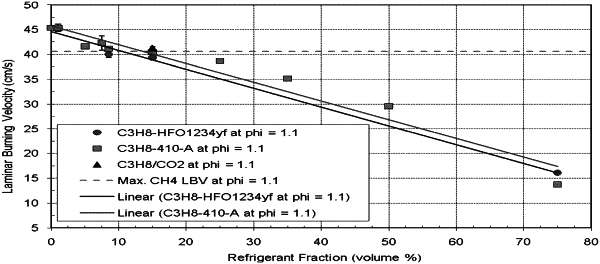| CPC F25J 1/0022 (2013.01) [C09K 5/042 (2013.01); C09K 5/045 (2013.01); F25J 1/0062 (2013.01); F25J 1/0097 (2013.01); F25J 1/0256 (2013.01); F25J 1/0278 (2013.01); C09K 2205/126 (2013.01)] | 9 Claims |

|
1. A method for liquefying natural gas offshore to produce liquified natural gas (LNG), said method comprising:
a) cooling a natural gas stream in an offshore LNG facility via indirect heat exchange in a first refrigeration cycle with a first azeotropic mixture of 75-90 mole percent propane and an environmentally-friendly low combustibility refrigerant comprising 10-25 mole percent fluorinated olefin, wherein the laminar burning velocity (LBV) of said first mixture is about 40 cm/s and decreases the risk of vapor cloud explosion as compared to mixtures having LBV>40 cm/s; and then
b) further cooling the natural gas stream via indirect heat exchange in a second refrigeration cycle with a second azeotropic mixture of the fluorinated olefin and ethylene; and then
c) further cooling the natural gas stream in an open refrigeration cycle with 75-100 mole percent methane; and
d) producing LNG.
|